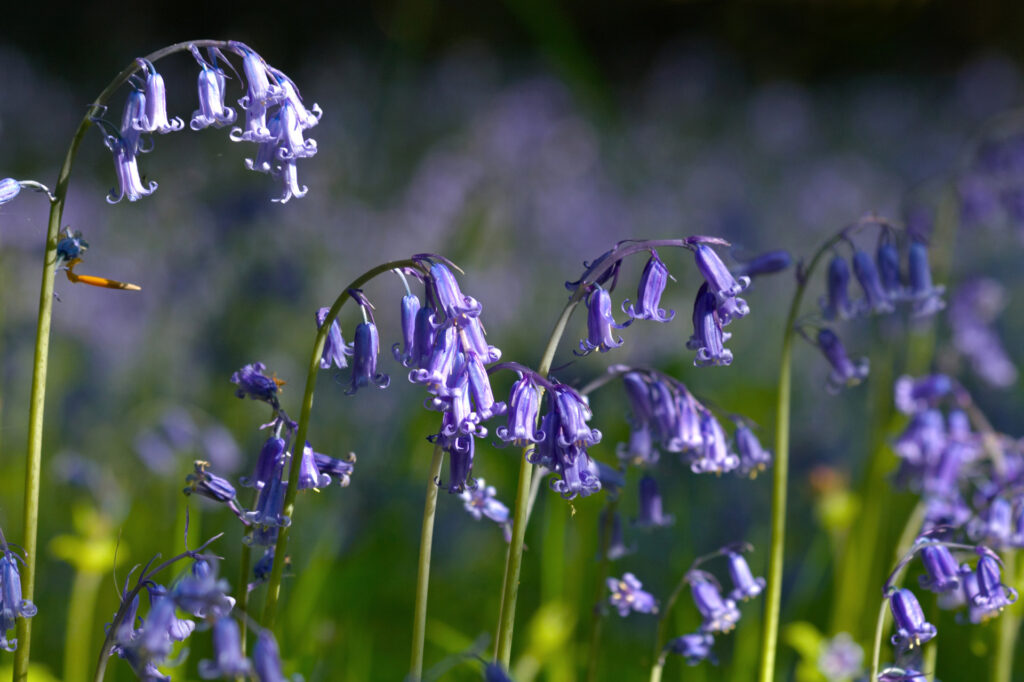Ancient Woodland
The woodland found towards the top of the site is different in nature and structure to that in the lower lying areas. The soils are derived from the Thanet Beds and contain sand, silt and clay. This mix of soils allow a range of interesting and key woodland species to thrive.
Although not listed in the Ancient Woodland Inventory, the area does have characteristics typical of ancient woodland. Ancient woodland indicator species such as moschatel (Adoxa moschatellina), wood anemone (Anemone nemorosa), bluebell (Hyacinthoides non-scripta), redcurrant (ribes rubrum), wych elm (Ulmus glabra), cherry (Prunus avium) and holly (Ilex aquifolium) suggest that this area has contained trees for a considerable length of time, and may well have been woodland before the gunpowder works was built in the early eighteenth century.

The ancient woodland changes dramatically through the seasons, but perhaps the best time to visit is in the Spring when a field layer of bluebells carpet the woodland floor. With spring in the air, there is plenty of wildlife to be found. Go in search of our woodland butterflies such as the speckled wood (Pararge aegeria) and holly blue (Celastrina argiolus), as they flutter through the dappled light and fresh green leaves.
Did you know: The speckled wood feeds mainly on the honeydew left by aphids.
One important aspect of ancient woodland is the biodiverse soil and leaf litter. It is easy to see species of woodlice, centipedes and millipedes, snails, slugs and predatory beetles, and if you look carefully you might see primitive insects called springtails. Springtails are believed to be the most abundant insects in the world! Beetles form the largest group of insects with over 4000 species in Britain. Many spend their lives hidden deep in vegetation or in water. The ancient woodlands at Oare Gunpowder Works play host to some of Britain’s largest beetles, such as the Violet Ground Beetle (Carabus violaceus), Lesser Stag Beetle (Dorcus parallelipipedus), and Greater Stag Beetle (Lucanus cervus).
The old trees and dead wood available in the country park’s ancient woodlands mean that there are lots of impressive stag beetles about!
